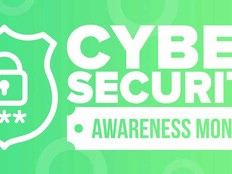Designing Security That Inspires Confidence
Although White House directives such as the President’s Management Agenda set the framework for reducing cyber risk, it’s up to the agency to work with partners, vendors and employees to manage the details. Uniting all stakeholders around a common understanding of the threat landscape — as well as the agency’s specific needs, goals and challenges — is often the first step in that process.
Realignment on key concepts ensures that IT and government leaders can face the new normal as a unified front and implement a comprehensive strategy that secures people, processes and technologies across the entire organization.
In a telework scenario, such a strategy may include awareness training, stronger authentication practices and improved endpoint encryption — all investments that safeguard data and systems, whether users are at home or in the office.
Of course, because comprehensive security looks at risk mitigation as just one part of the larger whole, IT teams work tirelessly to ensure tools and tactics combat threats without impeding overall mission effectiveness. Communicating that approach and value to government leaders is critical to gaining support for additional security investments amid today’s growing risks.










